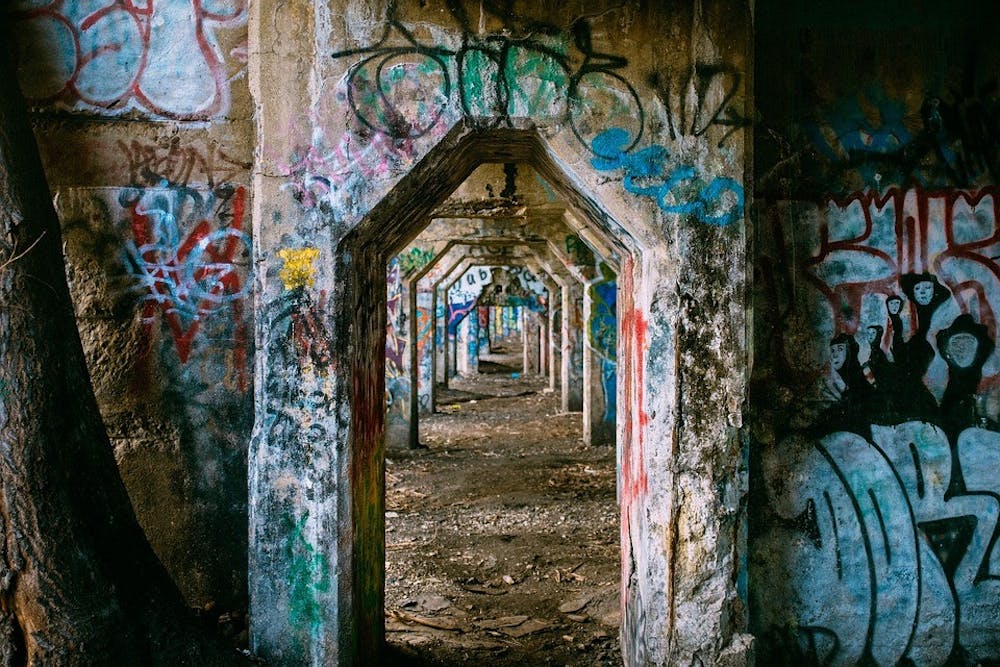This week, it’s someone’s name plastered over the concrete pillars. The next, it’s Mickey Mouse and Minnie Mouse getting it on. It’s Graffiti Pier–one of Philadelphia’s hidden gems and the next Magic Gardens for your “wow I’m a true Philly local” Instagram post (except better and free of charge).
Littered with broken glass and a random assortment of garbage, Graffiti Pier, otherwise known as Graffiti Underground, is an abandoned coal mining pier that has since become the home to many, whether that be artists themselves or spectators.
Legally, the Pier is still private property and visitors are technically considered to be trespassing. There is even an unspoken rule about never giving out the location. However, you can get there by entering Graffiti Pier as the location for your Uber or arrive there by private car. For the latter, once you reach the nearby parking lot, either jump over or duck under the fence and then follow the path, where you will see the pier.
It’s not just a place for the urban explorer community to gather. On any given visit, you can spot street artists spraying over layers and layers of existing artwork and photographers capturing the ever–changing murals of art.
But the place is not just frequented by artists who make huge artistic statements. Many go to throw up their tags, which essentially means signing their pseudonyms (as most people use to identify themselves or to avoid getting into trouble). Others use the Pier to smoke and drink. On some occasions, a game of paintball will be going on, the splashes of color adding to the vibrant artwork that has since colored the gray pillars.
The Pier started as a haven for graffiti art in the early 1970s. But before that, it was a major coal mining pier in Philadelphia. The story is that in the late eighteenth century, a woodsman Necho Allen built a campfire in Pottsville and fell asleep. He woke up to the sound of sputtering and crackling. The ground was warm; as it turned out, the ground he had built the fire on was not made of rock, but anthracite. So began the coal industry in Philadelphia.
With this growth came the railroad industry. However, as coal came to be replaced by natural gas and oil, the leading railroad company, Conrail, which owned the railroad through Graffiti Pier, was broken up by two of its competitors, CSX Transportation and Norfolk Southern Railway. The reallocation of its assets to two companies forced a break in the railroad tracks, leaving the Graffiti Pier abandoned.
Since then, the pier has become the go–to for artists and explorers alike. It also used to serve as the stage for underground shows for punk and rock bands, though they have discontinued today.
For Max K.*, he was looking for a creative outlet to express himself after being dissuaded by the otherwise more conventional forms of art. In Sam I.’s* case, he just wanted to leave his mark in what he felt was a “cool and dangerous” place. Both found their purposes at the Pier.
Graffiti Underground is definitely one of the few places to visit during your four years at Penn. Its awe can be explained only by first hand experience. Bring your new friends from NSO, meet your Tinder date here, or host your next BYO here–it’s worth it.
*Names have been changed.

